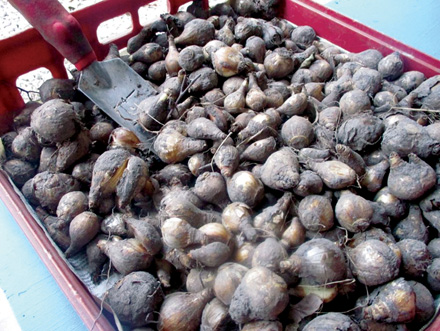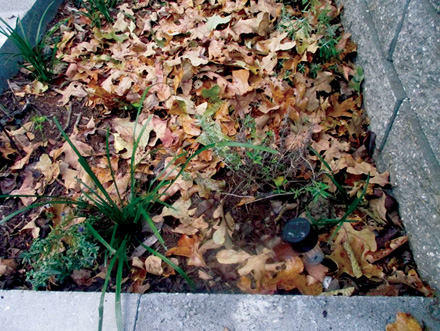October Gardening Chores

This is one of the gardening chores I don’t look forward to, deciding what potted plants come inside for winter. Early in the month it’s time to start pruning and checking for any hitchhikers that may be inadvertently coming inside, too.
To cut down on leaf drop, bring in plants a month before turning on the heat. I tend to wait until a couple of days before hard frost is in the forecast to give my plants as much time outside as possible. Then I have to sweep up dropped leaves for weeks afterwards so don’t do what I do if you don’t like messy plants.
For single plants in separate plants, consider combining them, watering well and the bringing them inside. Even if they only last for a couple of months, they will help to extend the growing season a little longer. Do I sound like I miss my garden over winter? You bet, it’s why my house looks like a little jungle mid-January.
If you haven’t been, you need to water. Perennials, evergreens and azaleas need one inch of water a week and we are sorely behind the average. Water with the hose in the ground so the water gets to the roots. Keep watering until our first hard frost. For USDA Zone 5d, that is usually around Halloween.
If you have been fertilizing, no more. Also this is not the time to prune anything, wait until January after the plants are dormant.
If you haven’t cleaned up flower beds of spent plants, here’s your last chance to gather seeds. Birds will take the rest after frost. Leave the rest to clean up in spring. By then, most of the greenery will have broken down and become part of the garden mulch.
Last call to bring in fresh herbs: basil, rosemary, parsley, chives and stevia will easily transition to a sunny, inside window in pots.
Geraniums, coleus, wax begonias, impatiens all will winter over inside if you keep them pinched and bushy. Geraniums will winter over stored in brown bags without soil. Really. I didn’t believe it until I tried it one year. I still prefer to bring them in still in pots so I can coax them to bloom through winter. So hardy, they will, too.
Time to get spring bulbs into the ground. Add a little bone meal at the bottom of the hole to slowly feed the bulbs. Plant bulbs close together if you don’t mind digging them up to separate in a couple of years. If you would rather not, give them some space in between. Mark where you planted them.
Leave the falling leaves where they are. If you are worried about your grass, run the mower over them. Leaves return Nitrogen to the soil and make a wonderful amendment to flower beds and help retain moisture. I started planting perennials this summer with holes lined with wet, dry leaves. Worked beautifully.
Charlotte Ekker Wiggins is a beekeeper, gardener and sometimes cook. Published by El Dorado Springs Sun once in print and online with author’s permission. Copyright 2017, all rights reserved. This column may not be reprinted, republished or otherwise distributed without author’s permission. Contact Charlotte at gardeningcharlotte at gmail dot com.

HAVE BULBS. WILL TRAVEL – I have hundreds of bulbs to plant out of one of my brother’s garden. They started in Missouri, lived out east for awhile, now are back in Missouri waiting for their new garden home.
 DRY LEAVES HOLD MOISTURE – Dry leaves help to hold in moisture in flower beds so I layer mine with layers of fall leaves followed by winter mulch after the first frost. Right now I am adding the leaf layer. (Photos by Charlotte Ekker Wiggins).
DRY LEAVES HOLD MOISTURE – Dry leaves help to hold in moisture in flower beds so I layer mine with layers of fall leaves followed by winter mulch after the first frost. Right now I am adding the leaf layer. (Photos by Charlotte Ekker Wiggins).



Facebook Comments